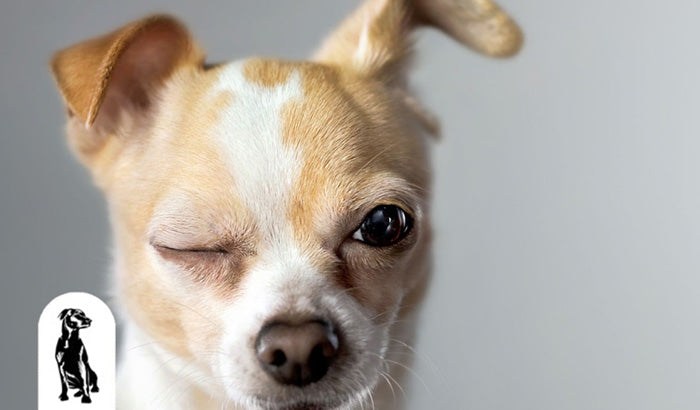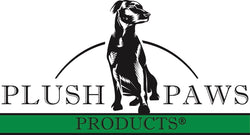
Canine eye health is essential for maintaining your pet's overall wellness and often remains unnoticed until issues arise.
Like humans, dogs suffer from various eye problems that might lead to severe complications if untreated. These eye issues are common but significantly affect a dog's quality of life, influencing everything from navigation abilities to interactions with others.
In this blog, we will explore the most prevalent eye problems in dogs, identify their signs and causes, and discuss effective prevention and management strategies. By staying informed and proactive, pet owners help ensure their furry companions maintain good vision and eye health throughout their lives.
What you should know about canine eye anatomy
Understanding a dog's eye structure will help you effectively recognize and address eye health issues. A dog's eye includes important components like the cornea, lens, retina, and optic nerve, each playing a vital role in vision.
The cornea, a clear front surface, allows light to enter and is necessary for vision clarity. The lens behind the cornea focuses light onto the retina, which converts light into signals that the optic nerve sends to the brain, resulting in visual perception.
Knowing these parts helps dog owners recognize unusual signs early, such as cloudiness in the cornea or changes in the shape of the eye, which could indicate underlying problems. This knowledge aids in early detection and enhances communication with veterinarians, ultimately enabling prompt and accurate treatment.
Recognizing symptoms early prevents the progression of eye diseases, maintaining your dog's eye health and overall quality of life.
Common canine eye problems
Conjunctivitis
Conjunctivitis, or pink eye, involves the inflammation of the conjunctiva, the thin clear tissue over the eye's white part. Symptoms include redness, swelling, and possibly clear or purulent discharge.
To prevent conjunctivitis, keep your dog’s environment clean, minimize exposure to irritants, and prevent contact with infected animals.
Dry eye (Keratoconjunctivitis sicca)
Dry eye results from inadequate tear production, causing irritation, discharge, and potentially severe corneal damage. Signs include a thick, sticky discharge and red, painful eyes. Treatment may involve medications to stimulate tear production or substitute tears. Regular veterinary check-ups help manage this condition and prevent complications.
Cataracts
Cataracts cloud the eye's lens, impairing vision and potentially leading to blindness. Common causes include aging, diabetes, or injury. Early detection through regular eye exams is essential, and treatment options often involve surgical removal of the cataract.
Glaucoma
Glaucoma involves increased eye pressure, causing severe pain and potential vision loss. Signs include eye redness, visible pain, and sometimes a visibly enlarged eye. Immediate veterinary treatment is necessary to manage the pressure and protect the optic nerve.
Corneal ulcers
Corneal ulcers are sores on the cornea, typically resulting from scratches, chemicals, or infection. Symptoms include squinting, redness, and a cloudy appearance. Immediate care from a vet helps prevent diseases and promote healing, usually involving antibiotics or antifungal medication.
Cherry eye
Cherry eye occurs when the gland of the third eyelid prolapses, showing as a red swollen mass at the corner of the eye. Although it's not usually painful, it may lead to significant dryness or exposure. Treatment usually involves surgically repositioning the gland to its original location.
Preventive measures

Regular veterinary check-ups
Regular veterinary check-ups are essential for maintaining your dog's eye health. The value of consistent eye examinations cannot be overstated; these visits allow veterinarians to detect early signs of potential issues such as cataracts, infections, or other eye conditions, ensuring that timely and effective treatment is administered.
Additionally, veterinarians offer tailored advice and preventive care strategies specific to your dog's breed. Many breeds have unique ocular susceptibilities that require special attention, and regular check-ups help manage these breed-specific vulnerabilities before they develop into more serious problems.
This proactive approach enhances your pet's quality of life, ensuring they maintain good vision and eye health throughout their lives.
Proper grooming
You need to groom your dog to keep their eyes healthy. Maintaining cleanliness around your dog's face and eyes reduces the risk of infections. It's important to regularly trim any long hair that could irritate the eyes, which could cause discomfort or lead to more serious issues.
A crucial step is to gently wipe away debris, discharge, or buildup from around the eyes with a damp cloth. This simple routine helps keep your dog's eyes clear and prevents irritants that could lead to infections or inflammation.
Ensuring that your dog's facial area is clean and free from obstructions allows them to see clearly and remain comfortable, ultimately keeping their eyes healthy and free from irritation.
Lanosterol eye drops
Lanosterol eye drops are gaining recognition as an innovative treatment option for cataracts in dogs. These eye drops target glycoproteins by breaking them down. Glycoproteins accumulate and cloud the lens, a common cause of cataracts. This action potentially reverses the progression of cataracts in their early stages, restoring clearer vision to affected dogs.
It is especially important for dog owners of breeds that are genetically predisposed to cataracts to consider this treatment option. If you are exploring ways to maintain your dog's eye health, discuss the potential use of Lanosterol eye drops with your veterinarian.
Your vet will advise you on whether these eye drops are a suitable preventive measure or treatment for your dog's specific condition, helping you make informed decisions about your dog's ocular health.
Nutrition
A balanced diet plays a pivotal role in maintaining overall health, including the health of your dog's eyes. To support optimal eye function and protect against common eye conditions, it's important to incorporate specific nutrients that are known to benefit eye health.
Antioxidants, such as Vitamins C and E, combat oxidative stress that damages eye tissues.
Omega-3 fatty acids, particularly those found in fish oil, also help maintain eye health. They enhance the integrity of the blood vessels within the eye and improve visual acuity by supporting the retinal function.
When planning your dog's diet, look for foods rich in these nutrients or consider supplements that are formulated to support ocular health.
By ensuring that your dog has adequate intake of these essential nutrients, you are taking proactive steps to safeguard their vision. This is particularly important as dogs age or if they are predisposed to eye issues due to their genetic background.
A diet tailored to eye health helps prevent the onset of eye problems and boosts your dog's overall vitality and quality of life.
Protection from injury
Protecting your dog's eyes during play and outdoor activities helps prevent injuries that may lead to serious, long-term damage.
When your dog engages in activities that pose a risk to their eyes, such as running through heavy brush or playing in areas with flying debris, consider using protective eyewear specifically designed for dogs. These goggles or glasses help shield the eyes from harmful elements and reduce the risk of scratches, punctures, or more severe ocular injuries.
Additionally, it's important to train your dog to engage in safe play habits. Discourage rough play with other dogs and avoid using hard objects as toys that could accidentally strike and injure the eyes.
Instead, opt for soft, safe toys that are size-appropriate and designed for dogs. Encouraging gentle play and supervising interactions with other dogs reduces the risk of eye injuries.
Making small adjustments to your dog’s play environment protects them from dangers. Ensure that play areas are free from sharp branches, thorns, and debris that could harm your dog's eyes.
Regularly inspecting and modifying the environment to make it safer allows your dog to enjoy their playtime without putting their eye health at risk. By taking these precautions, you help prevent painful injuries and potential vision loss, ensuring your dog remains happy and healthy.
Treatment options
Medications and surgery
Effective treatments for common canine eye issues range from topical medications to more invasive surgeries. Medications typically include antibiotic or anti-inflammatory eye drops that treat infections and reduce swelling.
For severe conditions like cataracts or glaucoma, surgical interventions may be necessary. Cataract surgery involves removing the cloudy lens and often replacing it with an artificial one to restore vision. Procedures to reduce intraocular pressure and prevent optic nerve damage may be necessary for glaucoma.
Seeking veterinary care
Identifying the right time to consult a veterinarian will help manage your dog’s eye health effectively. You should visit the vet at the first sign of discomfort, discharge, redness, or significant behavior changes such as pawing at the eyes or visible pain. Early intervention prevents more serious complications and improves the prognosis.
Consequences of delayed treatment
Delaying treatment leads to permanent damage or even loss of vision. Conditions like glaucoma result in blindness quickly if not addressed promptly.
Similarly, untreated infections spread, causing more severe health issues beyond the eyes. In cases of trauma or sudden onset of symptoms, immediate veterinary attention will help prevent long-term damage.

Protect your pup and prevent eye problems with Plush Paws
For those seeking an innovative solution to common eye problems like cataracts, Plush Paws' Pet Eye Drops with Lanosterol offer a non-invasive option. These drops help dissolve glycoproteins that cause cloudiness, potentially improving vision without surgery.
Explore Plush Paws Products to discover how these eye drops benefit your furry friend. Adding effective products like Plush Paws Lanosterol Eye Drops to your pet care routine impacts eye health management. Ensure your pet's eyes remain bright and healthy, and enjoy every moment with clear vision.